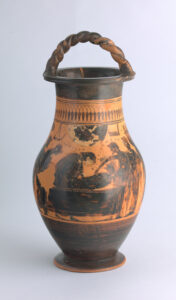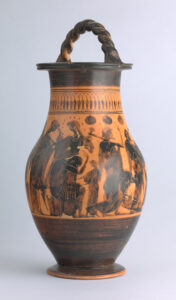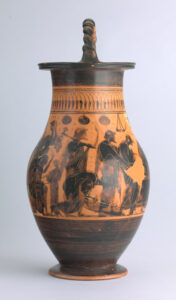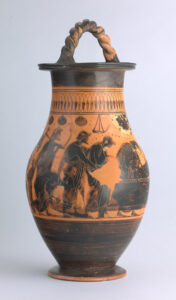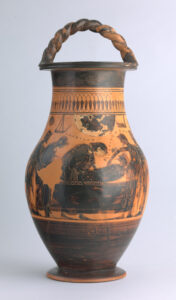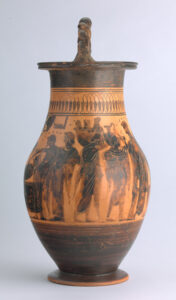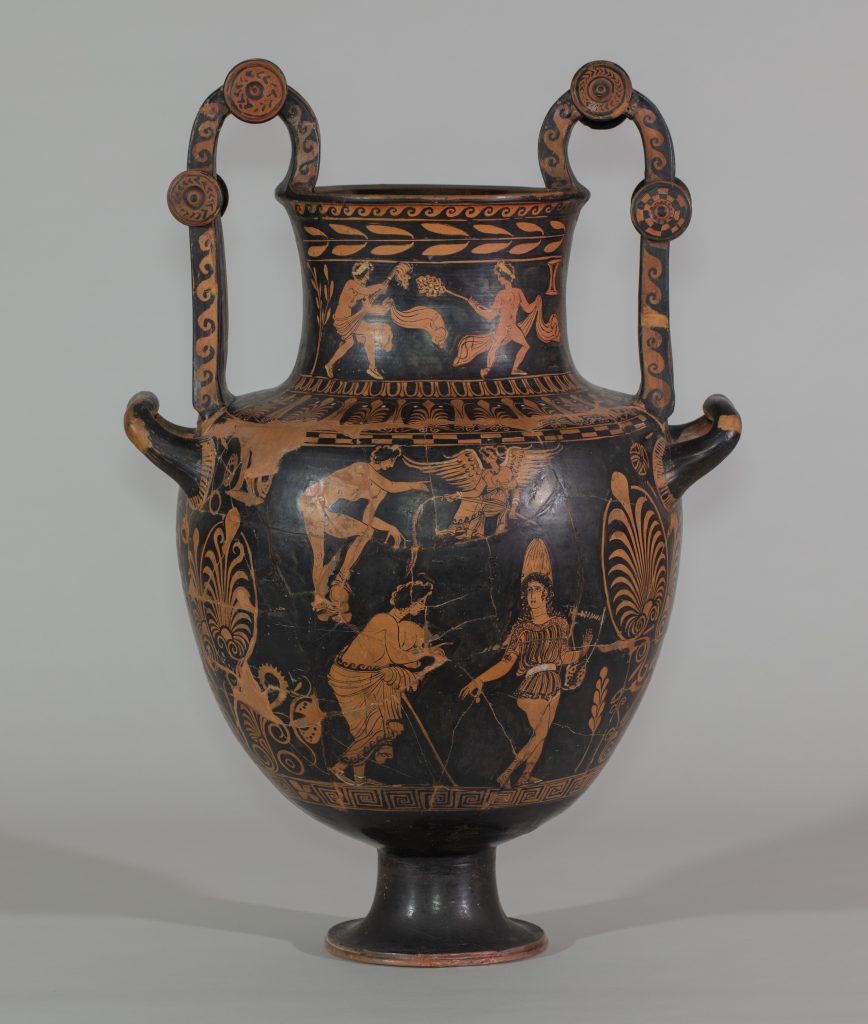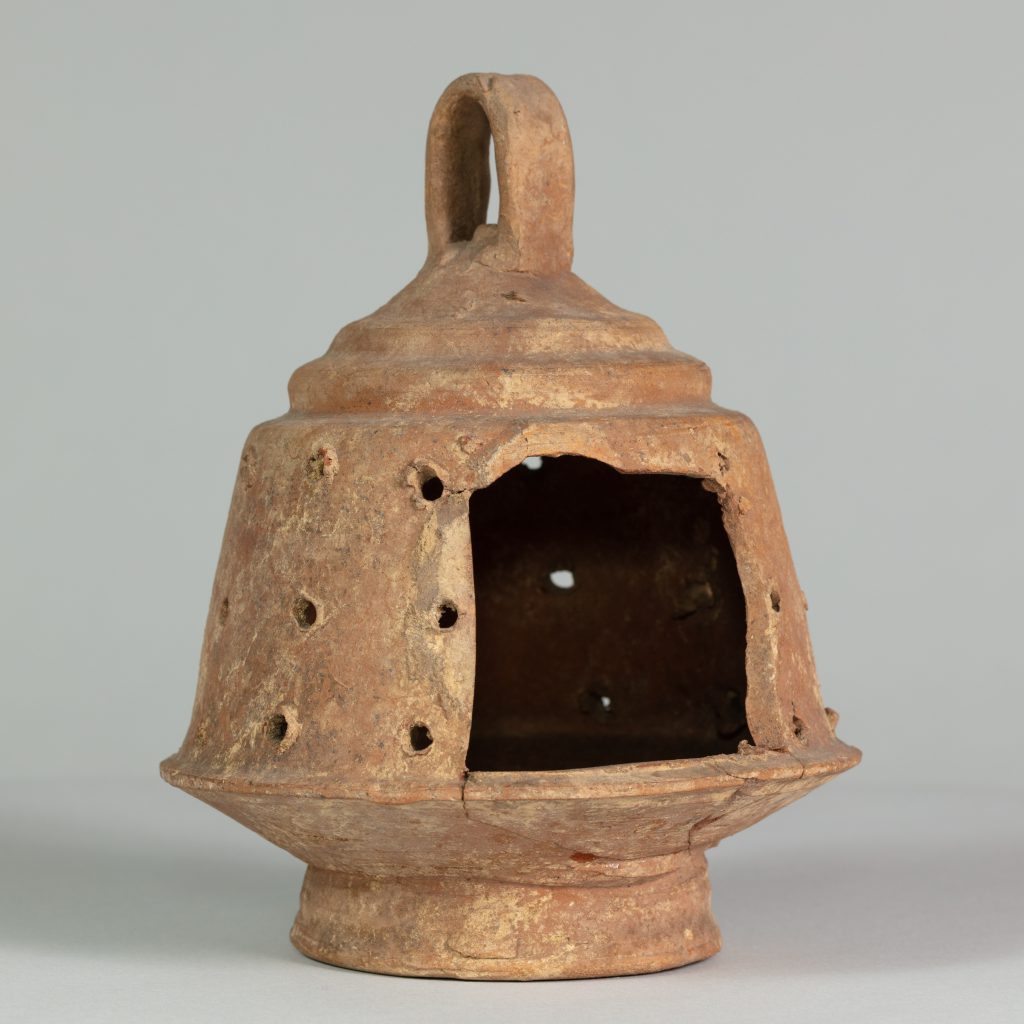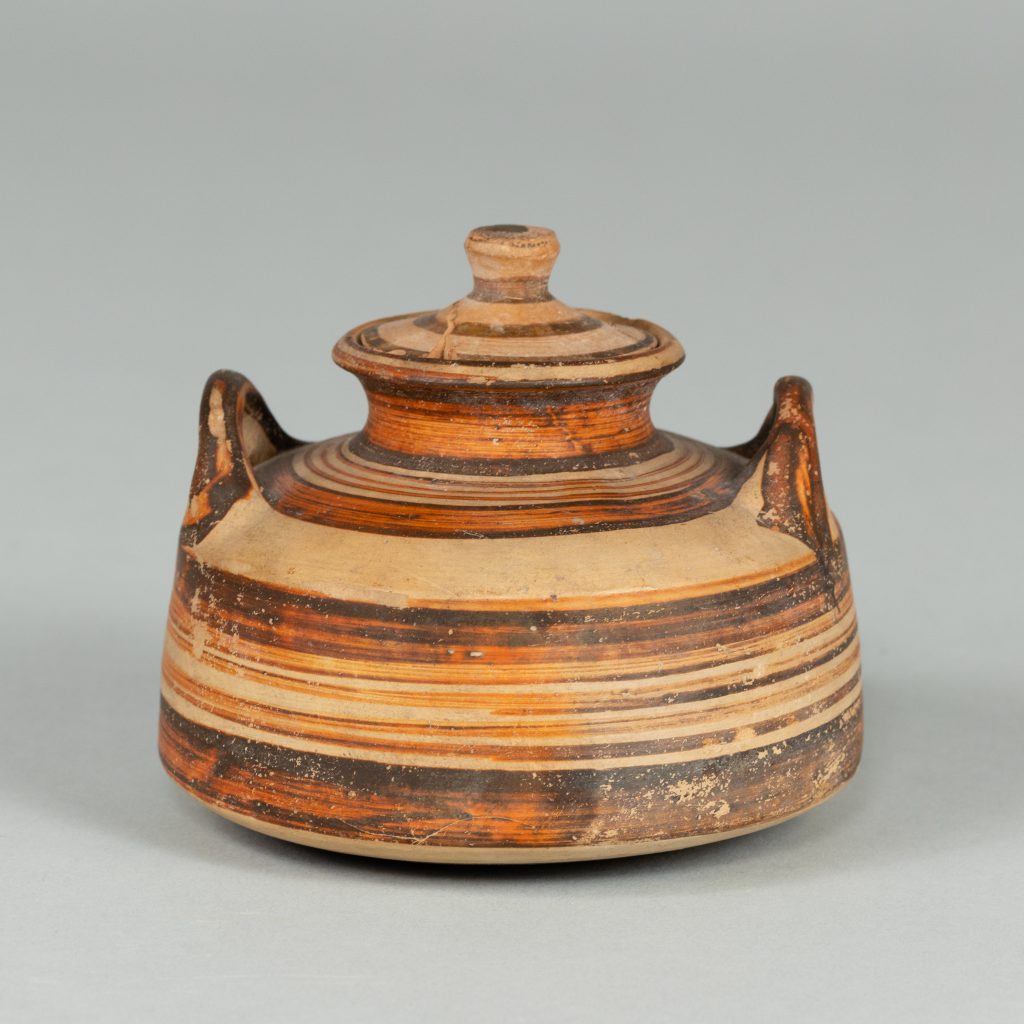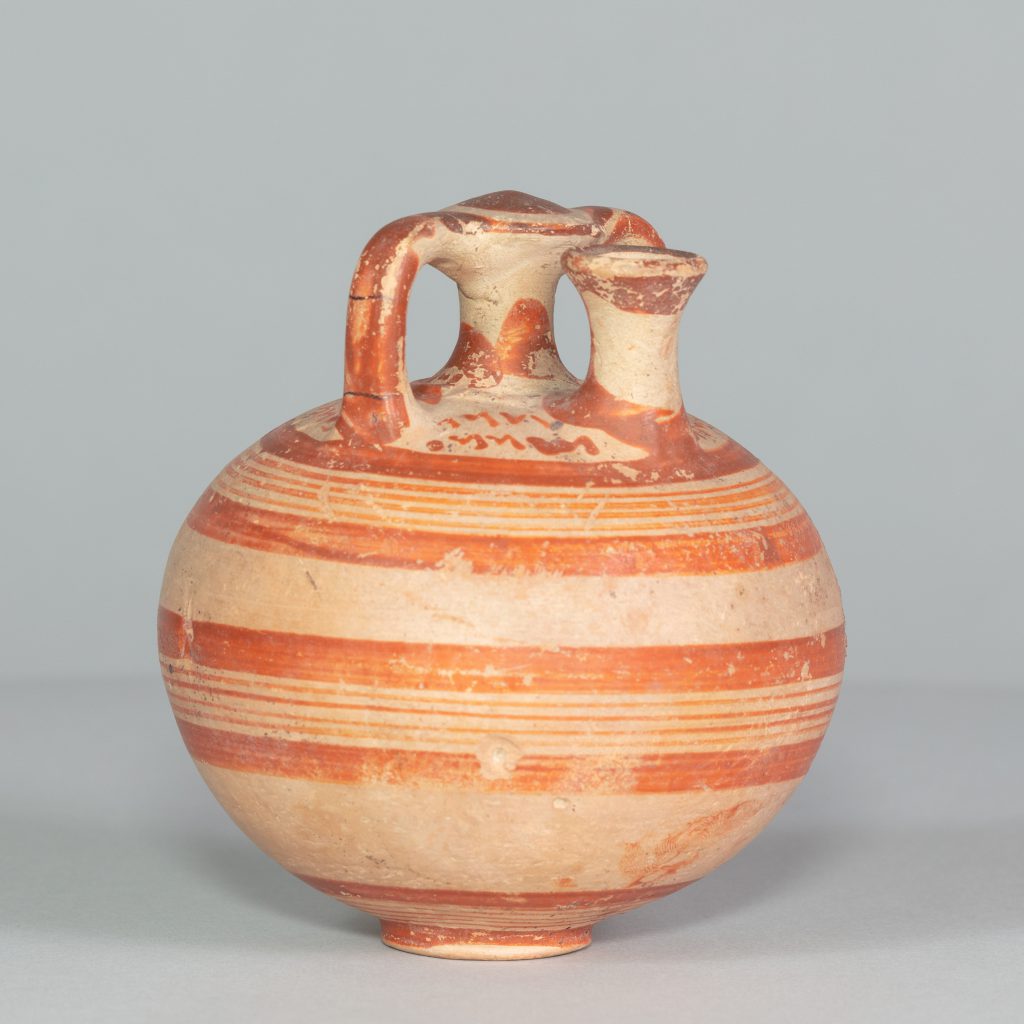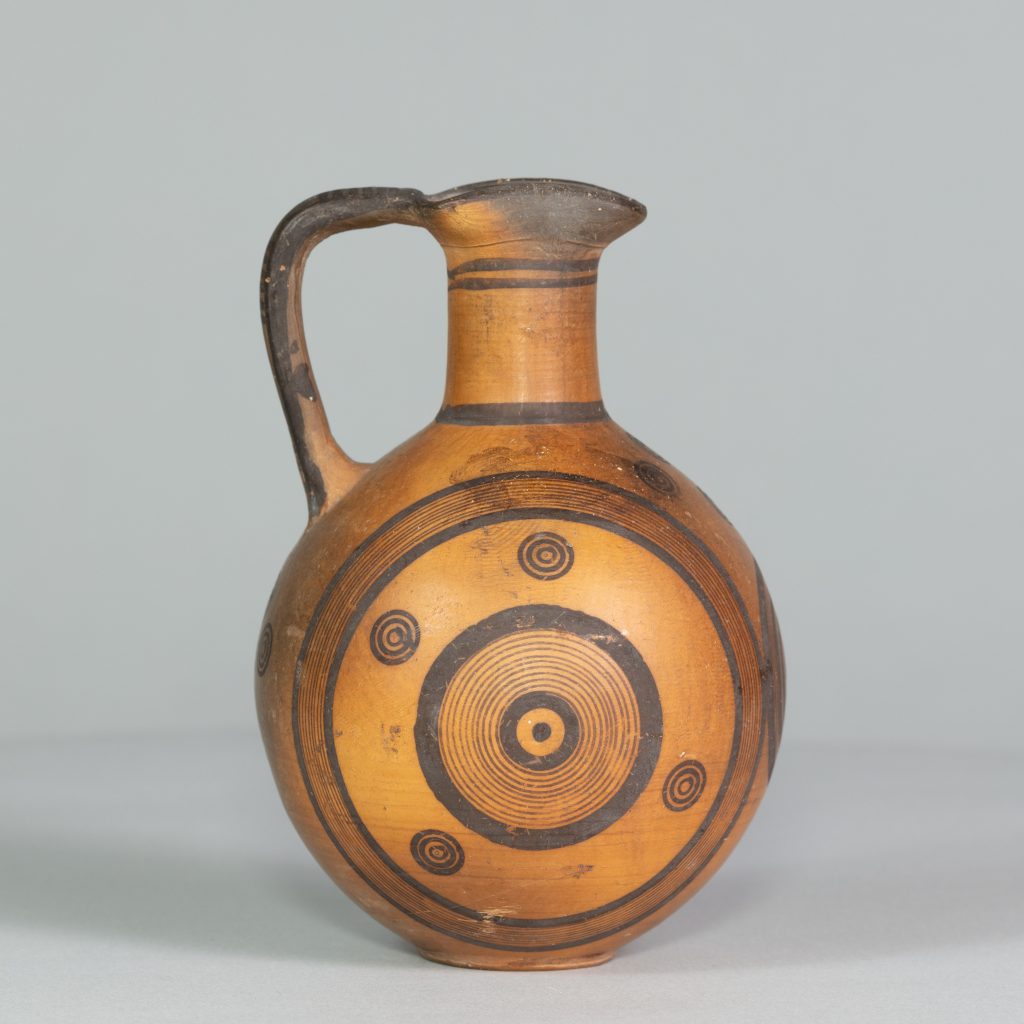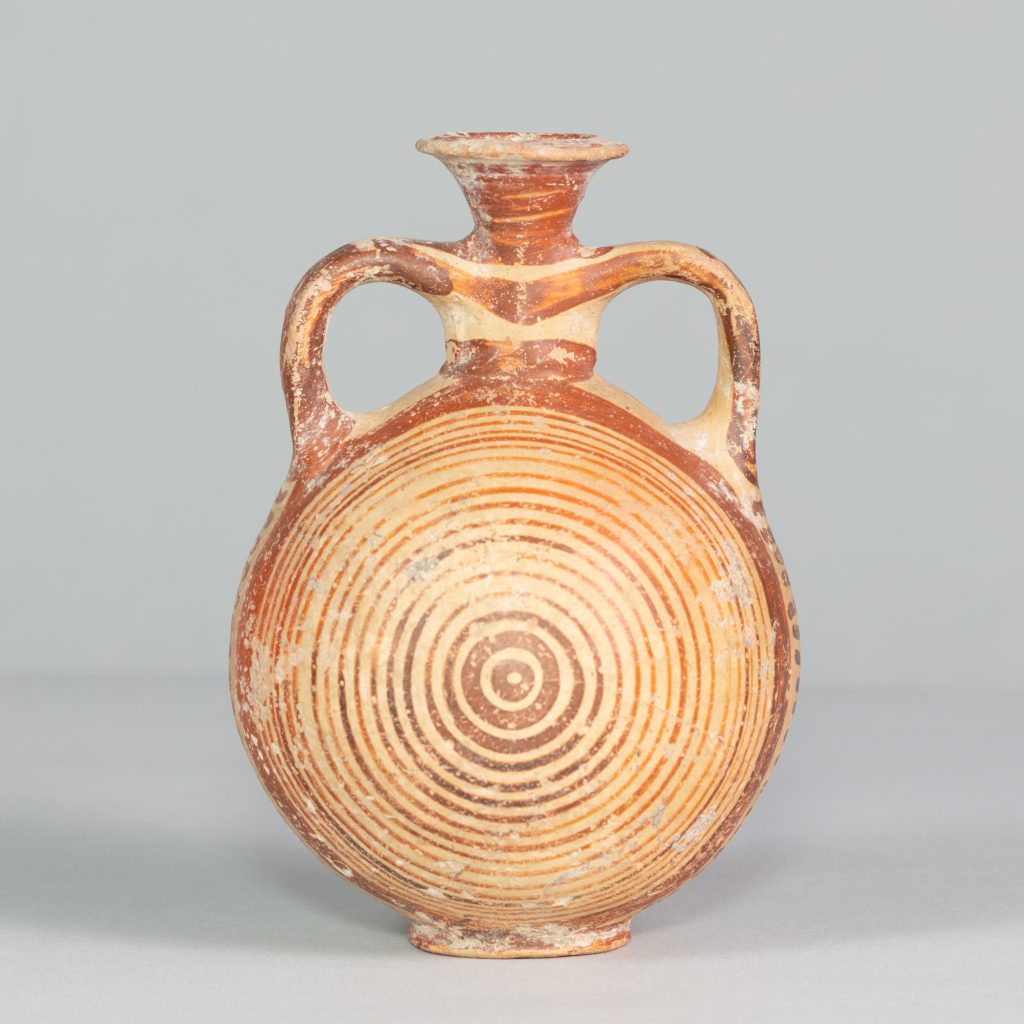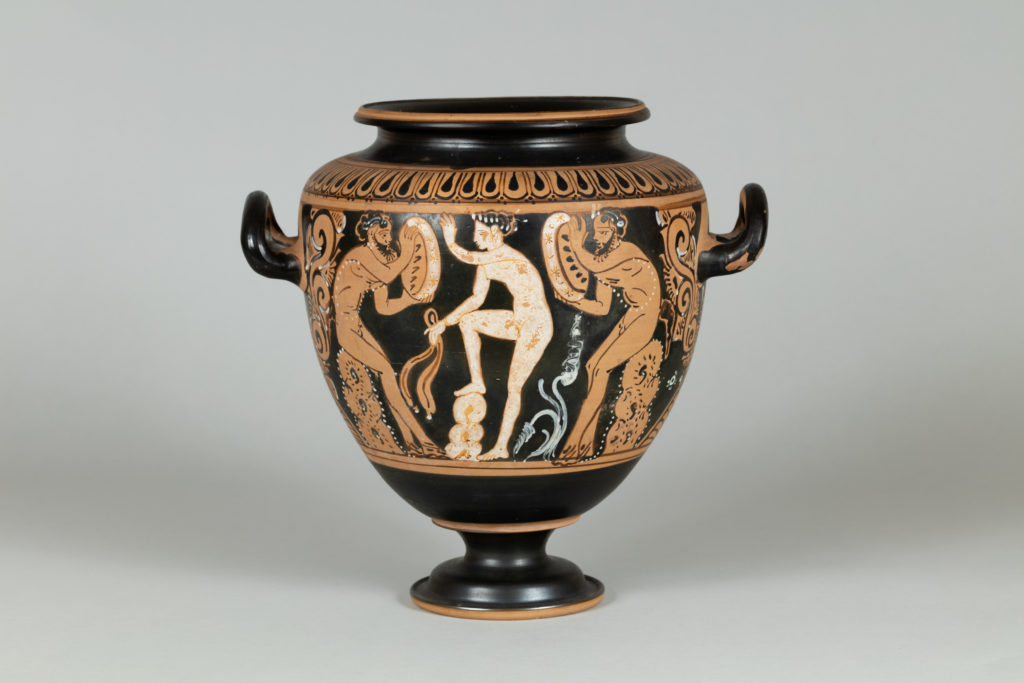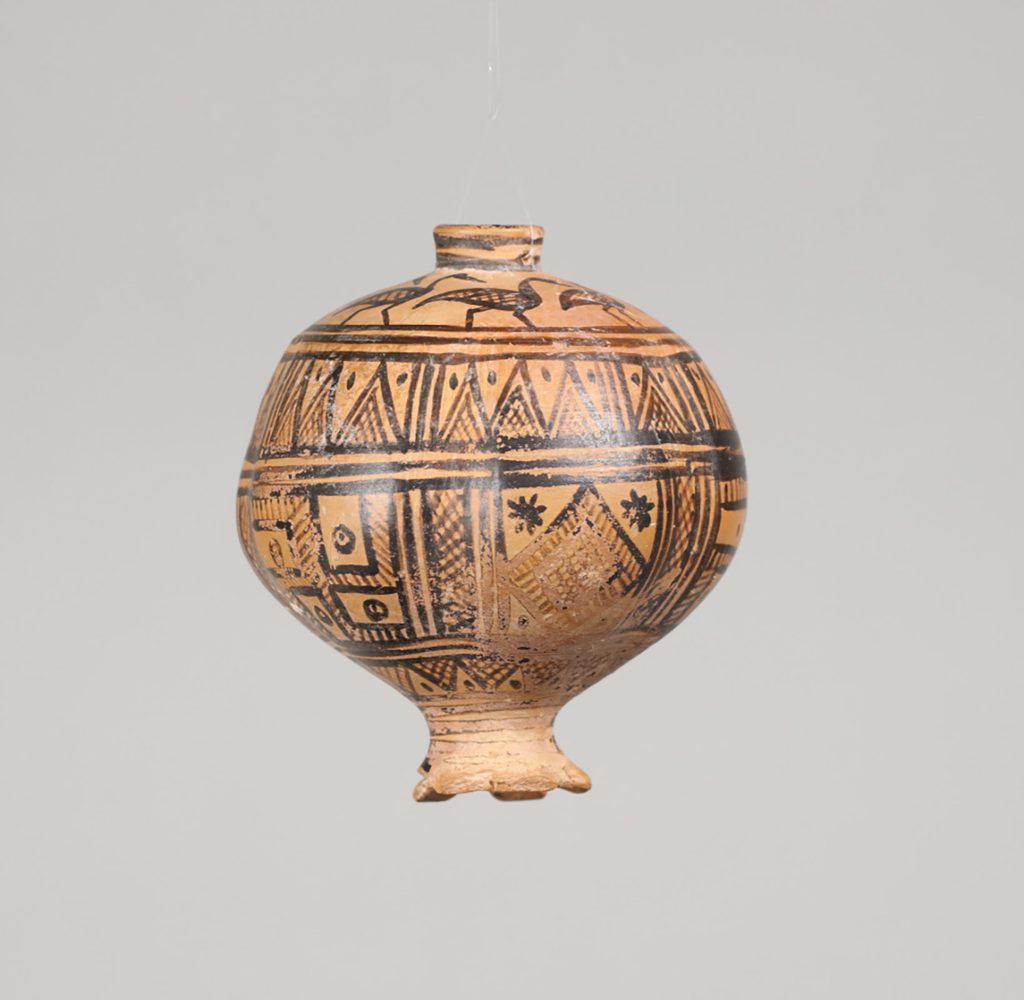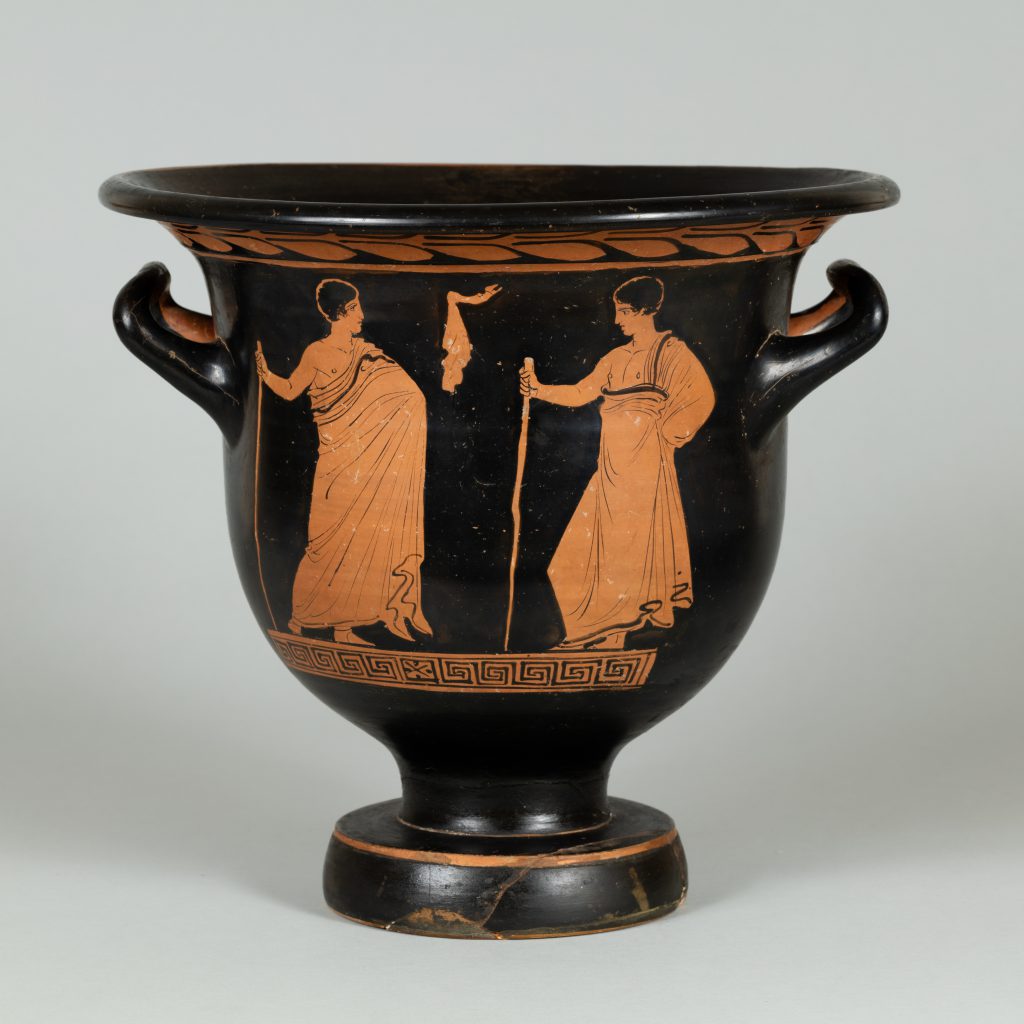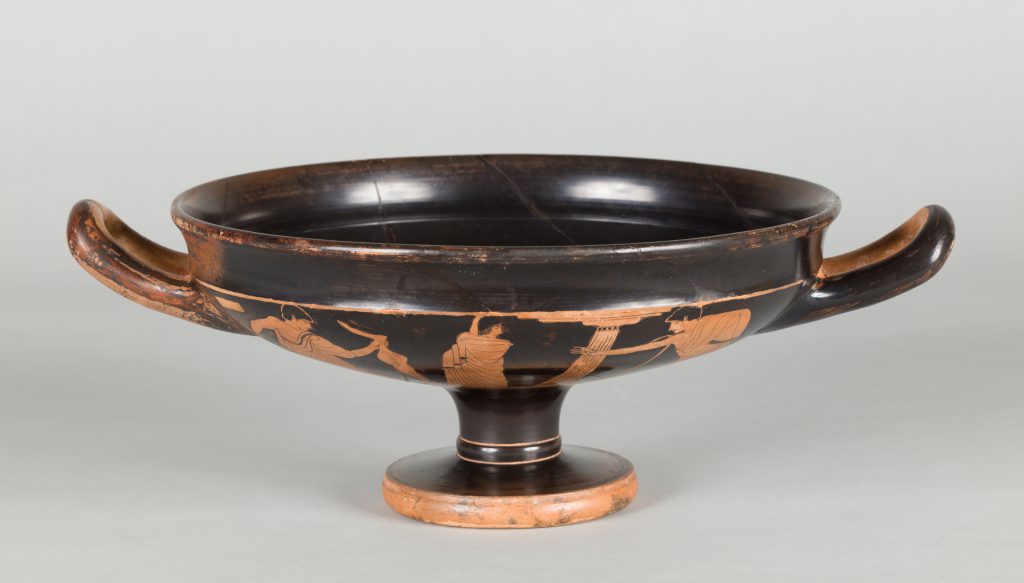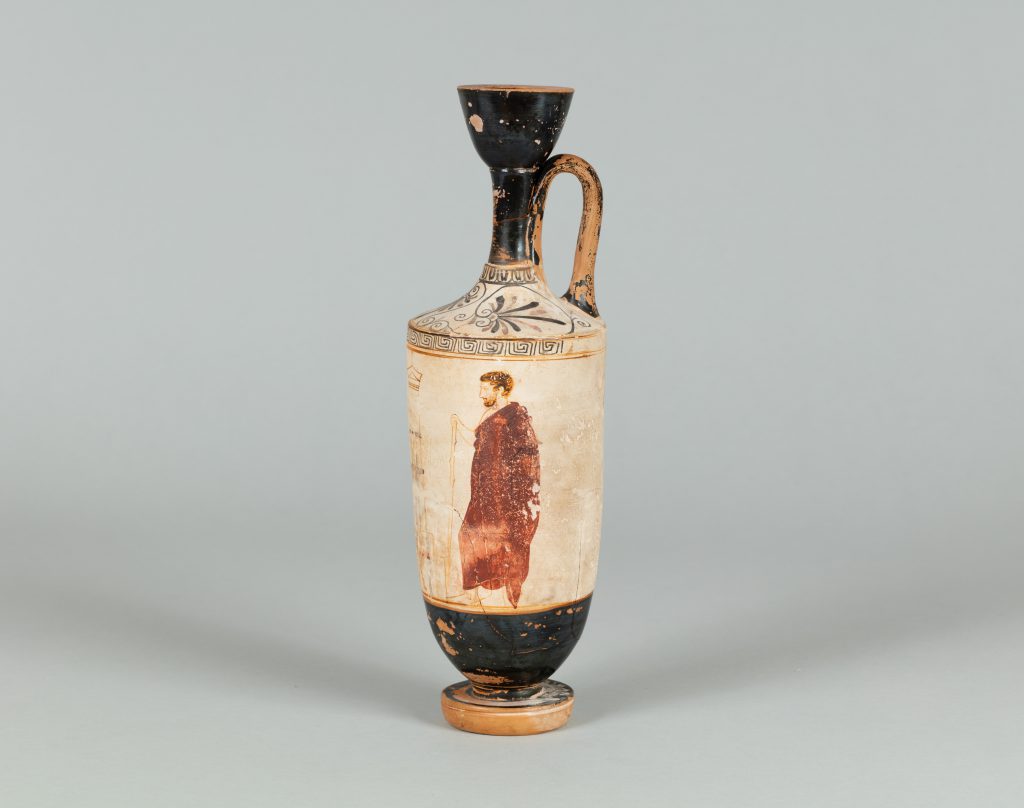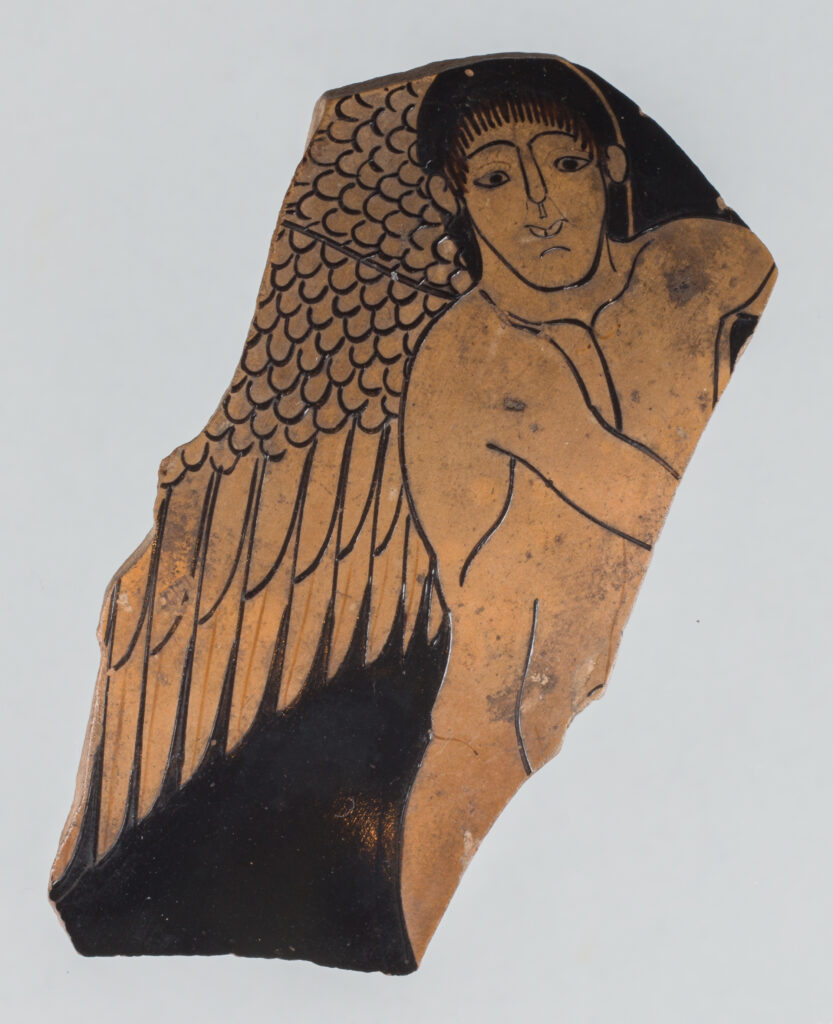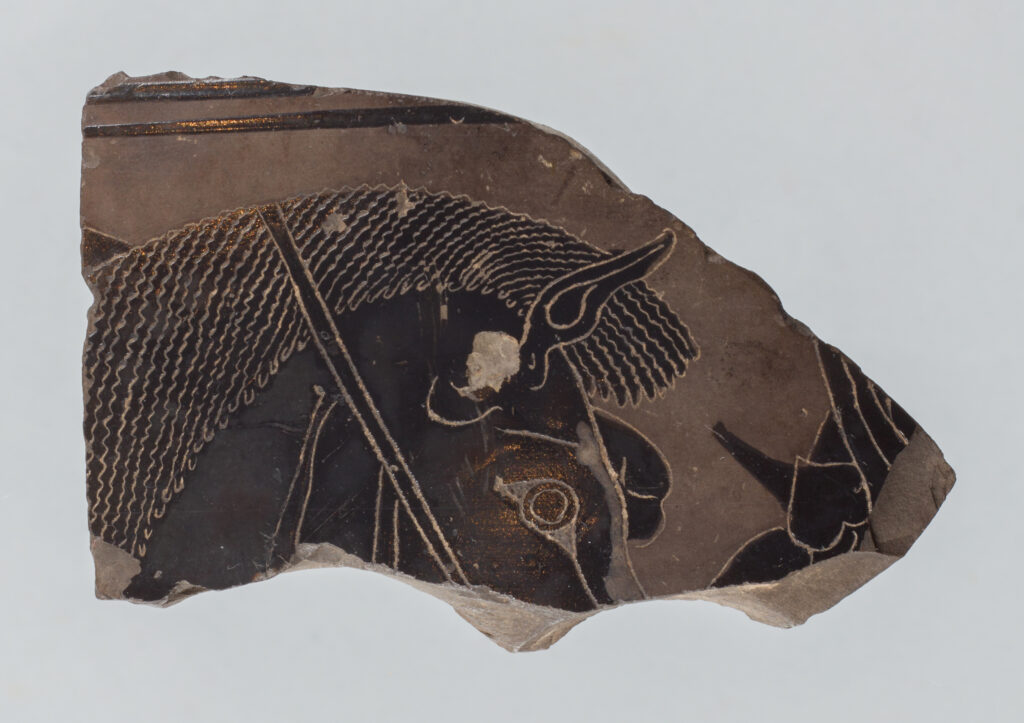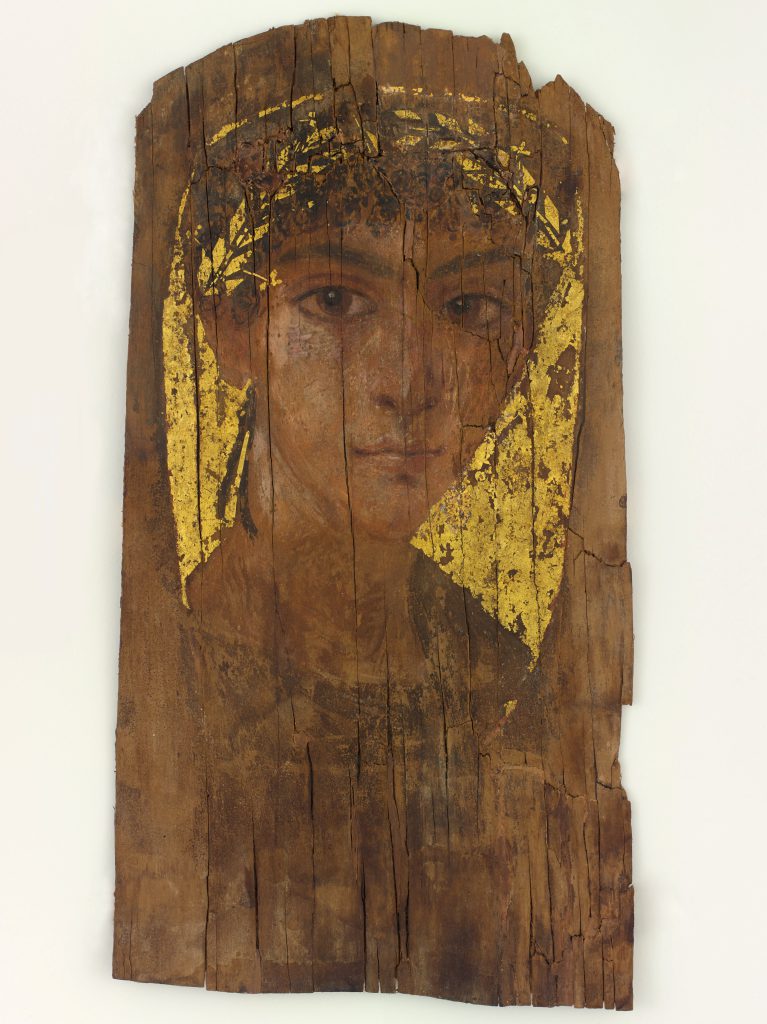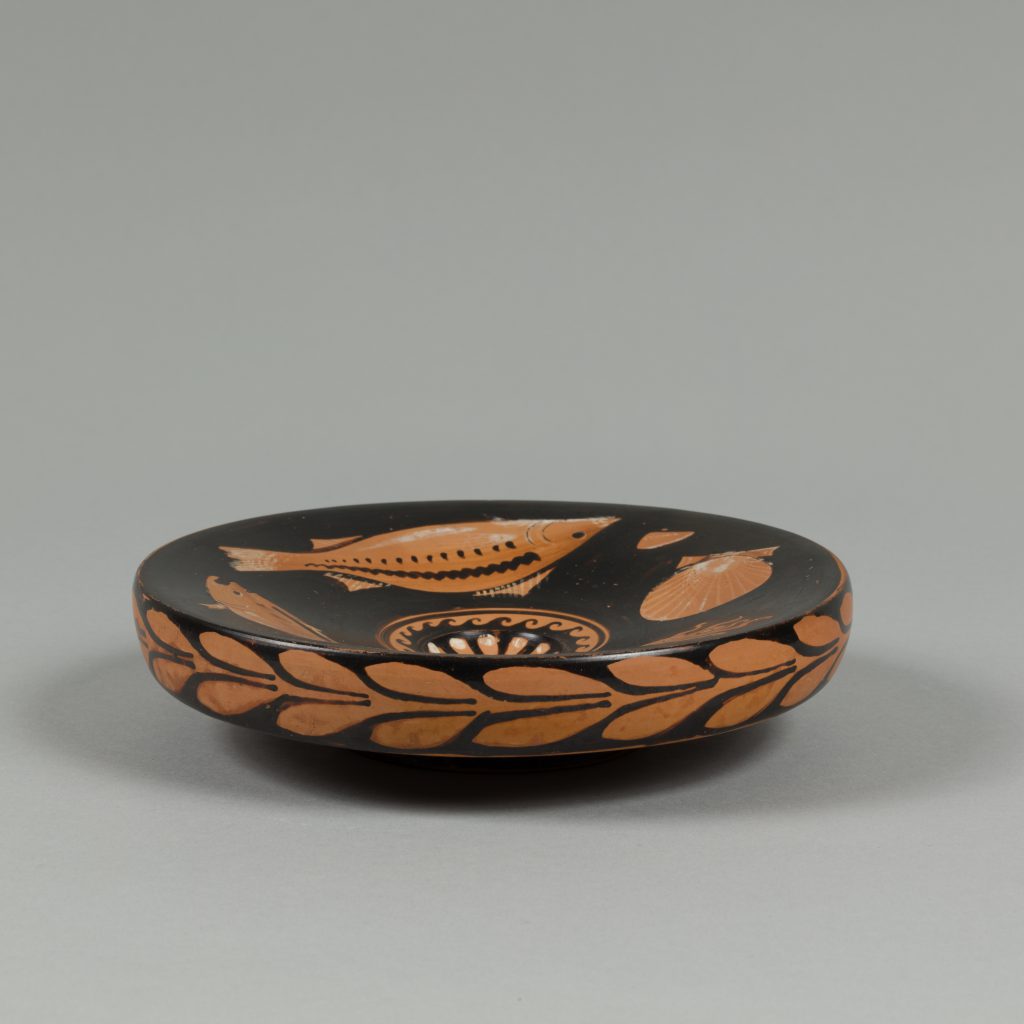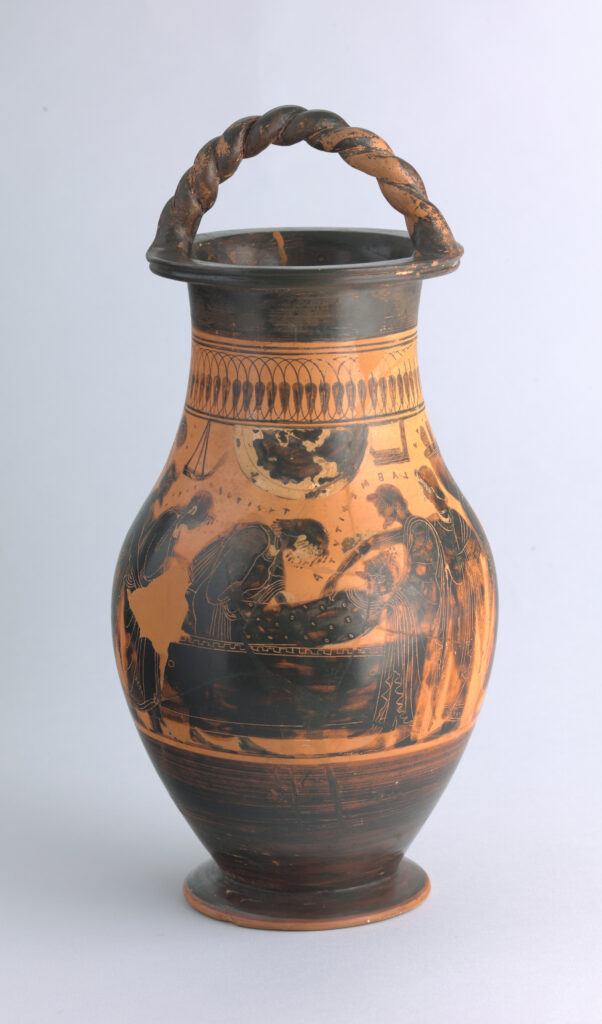






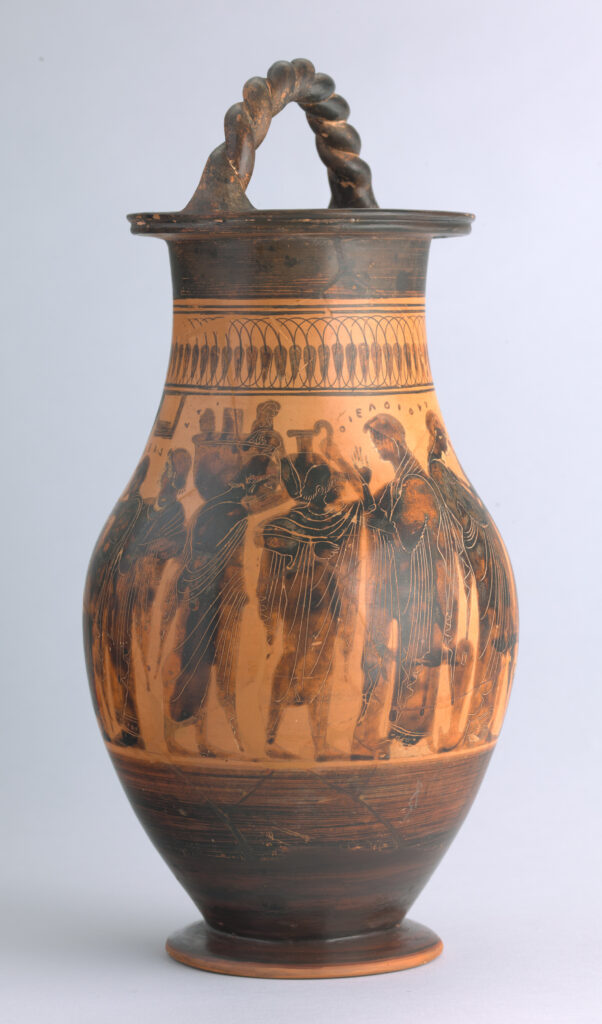
Museum purchase, Adela Wood Smith Trust, in memory of Harry de Forest Smith, Class of 1891
1984.23Oinochoai were single-handled jugs used for pouring liquid such as wine (oinos in Greek is wine). With its slender proportions and continuous curve from rim to foot, this example is a type of oinochoe often called an olpe. The rope-like handle would not have permitted pouring; rather the vase was designed specifically to be carried in the funeral. The jug is attributed to the Sappho Painter, who decorated the vase using the black-figure technique, in which illustrations are painted onto the vase in black silhouette using a slip that turns black when fired.
The scene on this oinochoe illustrates a rare glimpse of the Greek funeral, which unfolds, uninterrupted, around the body of the vase. Central is a virtually unique view of a dead male being placed into a coffin in preparation for the ekphora, or procession to the tomb. This laying out of the body was called the prothesis and, in Athens during this period, lasted for two days. In the early hours before dawn of the third day, the body would be conveyed to the cemetery for burial. The central scene on the Bowdoin oinochoe includes details that recall this tradition. Lamps are suspended from the ceiling providing light to the mourners gathered for this ritual, who are depicted in various activities that anticipate the procession. They are young and old, male and female, and together provide a rare glimpse of the Greek family engaged in one of their most solemn tasks.
Before 1966, Charles Gillet collection, Lausanne; 1966, inherited by Marion Shuster; 1974, with Robin Symes, London; before 1984, acquired by D. Zimmerman and Nicolas Koutoulakis, Geneva; 1984, purchased by the Bowdoin College Museum of Art, Brunswick.
